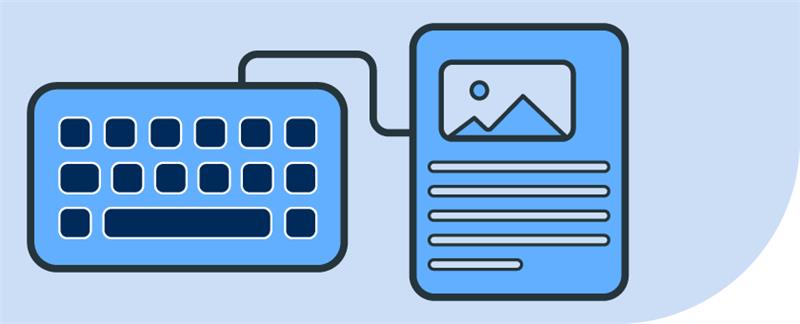The Top 5 Strategies for Cost-Effective IT Management in K-12 Schools and Districts
Blogs
April 8, 2024
Introduction
Managing IT in K-12 schools goes beyond just keeping the computers running. It’s about creating an environment where technology enhances learning while being cost-effective. Here are five strategies that can help achieve this balance and pave the way for a future-ready education system.
Strategy 1
Embrace Cloud Hosting
Cloud hosting can significantly reduce up-front costs, eliminate the need for constant software updates, and provide access to data from anywhere. By leveraging cloud services, K-12 schools can break free from traditional IT constraints and enjoy flexibility and savings.
Benefits of Cloud Hosting:
- Scalability: Pay for what you use, with the ability to scale as your school’s needs grow.
- Accessibility: Access data anytime, anywhere, supporting remote learning and administration.
- Security: Advanced security features protect student and staff data from cyber threats.
Getting Started with Cloud Hosting:
- Evaluate your current IT needs, including software and hardware dependencies.
- Research cloud providers that specialize in education.
- Develop a migration plan, considering data migration and potential downtime.
- Train staff to handle the new systems.
- Implement in phases, starting with non-critical systems.
- Monitor and optimize the cloud environment continuously.
Strategy 2
Practice Strategic Sourcing
Strategic sourcing involves smart shopping for tech solutions to maximize your budget. It’s about negotiating deals, seeking educational discounts, and building long-term vendor relationships.
Steps for Strategic Sourcing:
- Audit existing contracts to find potential savings.
- Identify key vendors that offer educational discounts or bulk pricing.
- Train your procurement team in negotiation strategies.
- Test products through pilot programs before full implementation.
- Regularly review and refine sourcing strategies to maintain cost-effectiveness.
Strategy 3
Consolidate Platforms
Reducing the number of software platforms can save money and simplify IT management. Platform consolidation means using fewer, more versatile tools that cover multiple functions.
Benefits of Platform Consolidation:
- Simplified support with fewer platforms to manage.
- Easier training for staff and students.
- Cost savings from reduced licensing fees.
How to Consolidate Platforms:
- Conduct an inventory of all platforms currently in use.
- Set goals for consolidation, such as cost savings or improved user experience.
- Involve stakeholders in the decision-making process.
- Choose integrative solutions that offer broad utility.
- Test and train users before full implementation.
- Review and refine the consolidation efforts regularly.
Strategy 4
Invest in Staff Training and Development
Well-trained staff can manage IT systems more efficiently and troubleshoot minor issues, reducing the need for costly external support.
The True Value of Training
Investing in training pays dividends:
- Empower Your Educators: Well-trained staff can troubleshoot minor issues, reducing the need for costly external IT support.
- In-House Heroes: Cultivate a team that can manage new technologies as they’re adopted, keeping operations smooth.
- Continuous Learning: Just like the tech they manage, your staff’s skills need regular updates to stay relevant.
Steps for Effective Staff Training:
- Identify current skill gaps among your staff.
- Develop a training plan with clear objectives and resources.
- Select relevant training modules tailored to your IT infrastructure.
- Incentivize learning to encourage participation.
- Track progress and update the training program as needed.
Strategy 5
Implement Preventive Maintenance and Lifecycle Management
Regular maintenance and planned upgrades can prevent expensive issues and ensure that your technology remains up-to-date.
Steps for Preventive Maintenance:
- Inventory all IT assets and assess their current state.
- Schedule regular maintenance and updates.
- Define lifecycle milestones for upgrades or replacements.
- Educate users on the importance of maintenance.
- Invest in monitoring tools to track the health of IT assets.
- Review and adjust maintenance plans annually.
Taking Charge of IT Costs
These strategies aim to put you in control of your school’s technology journey, making it efficient and cost-effective.
Platform Consolidation with Follett Software:
The Follett Software Platform integrates solutions like Destiny Library Manager, Destiny Resource Manager, and Destiny Fundraising Manager. This holistic approach streamlines administrative processes and enhances student engagement.
Cloud Hosting with Destiny
Destiny Cloud hosting ensures scalability, reliability, and security. It supports data-driven insights, collaborative learning environments, and equitable resource access, all while maintaining compliance with educational standards.
Future-proof your Follett Software platform.
Related Links
By implementing these strategies, K-12 schools can efficiently manage their IT resources, enhance learning experiences, and stay within budget.
Related Resources

How to Automate Your K-12 1:1 Device Audits and Inventory
Blogs

10 Essential Graphic Novels
Blogs

